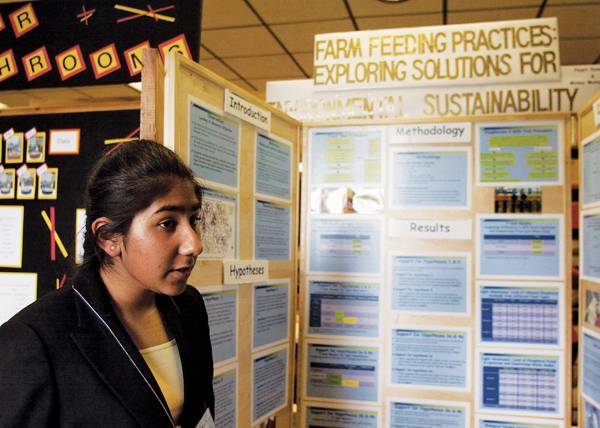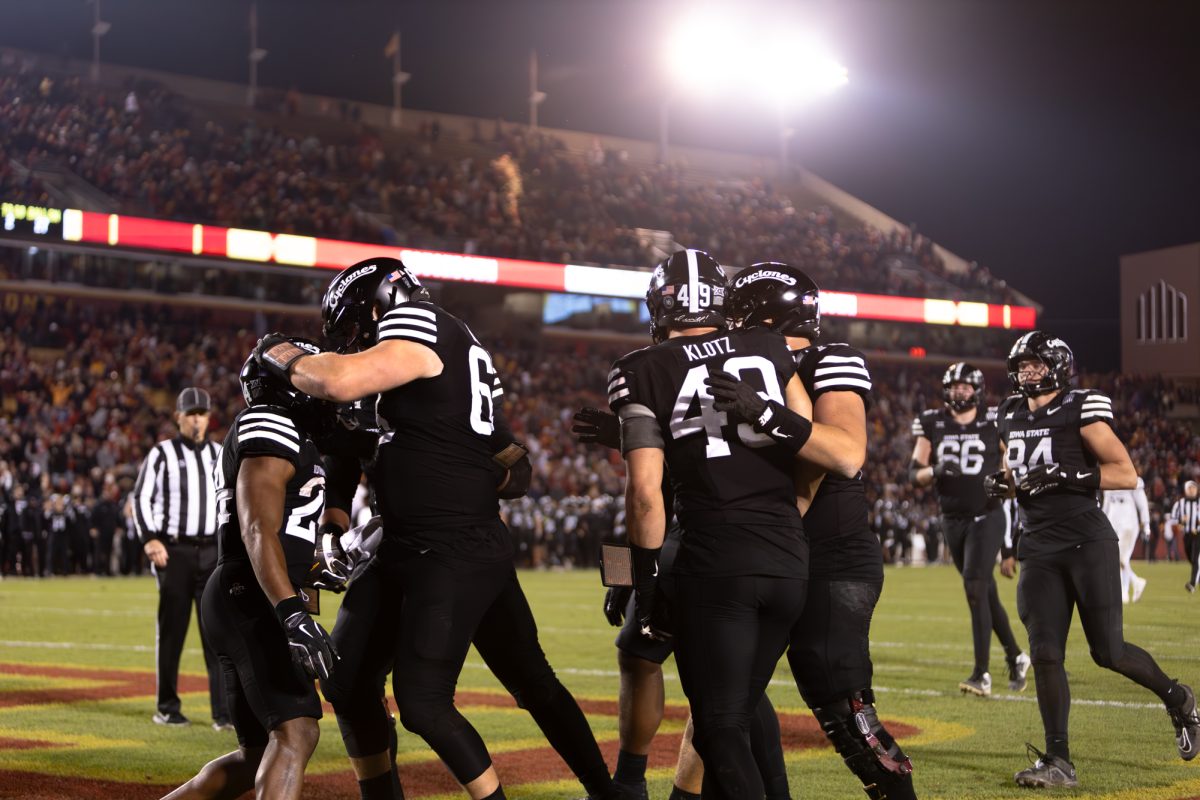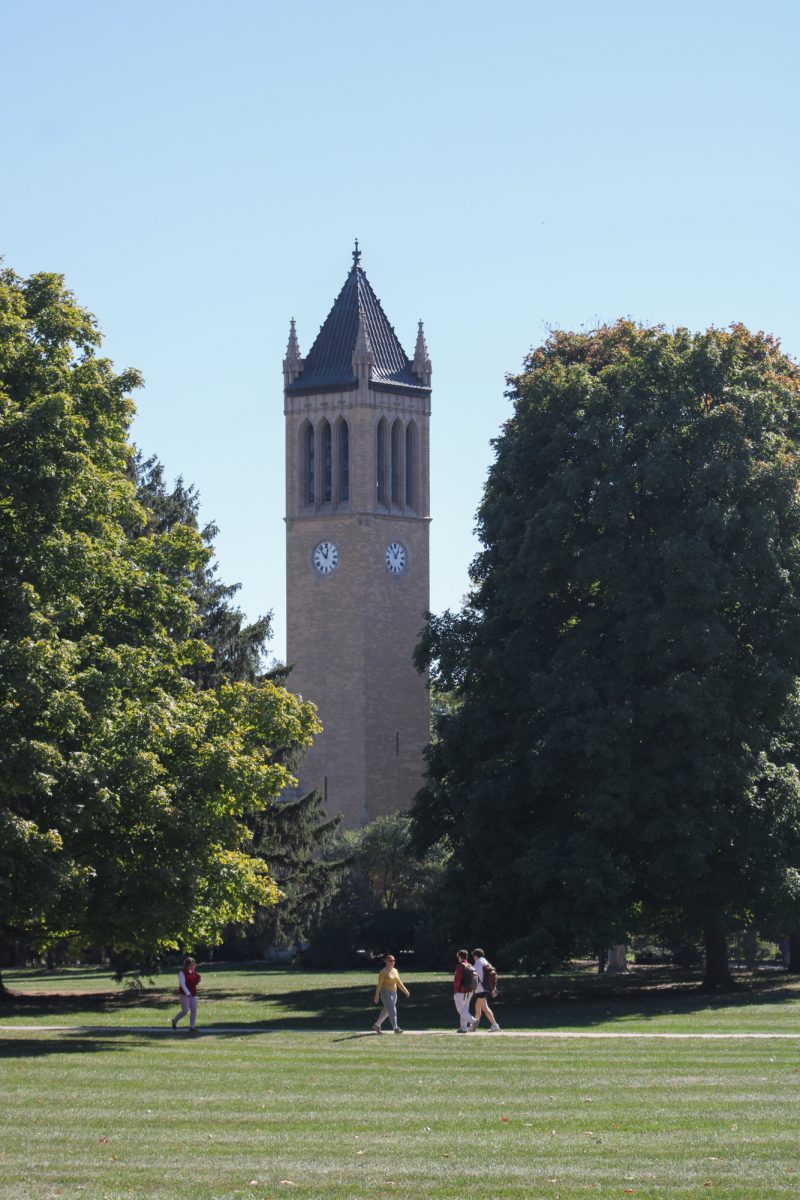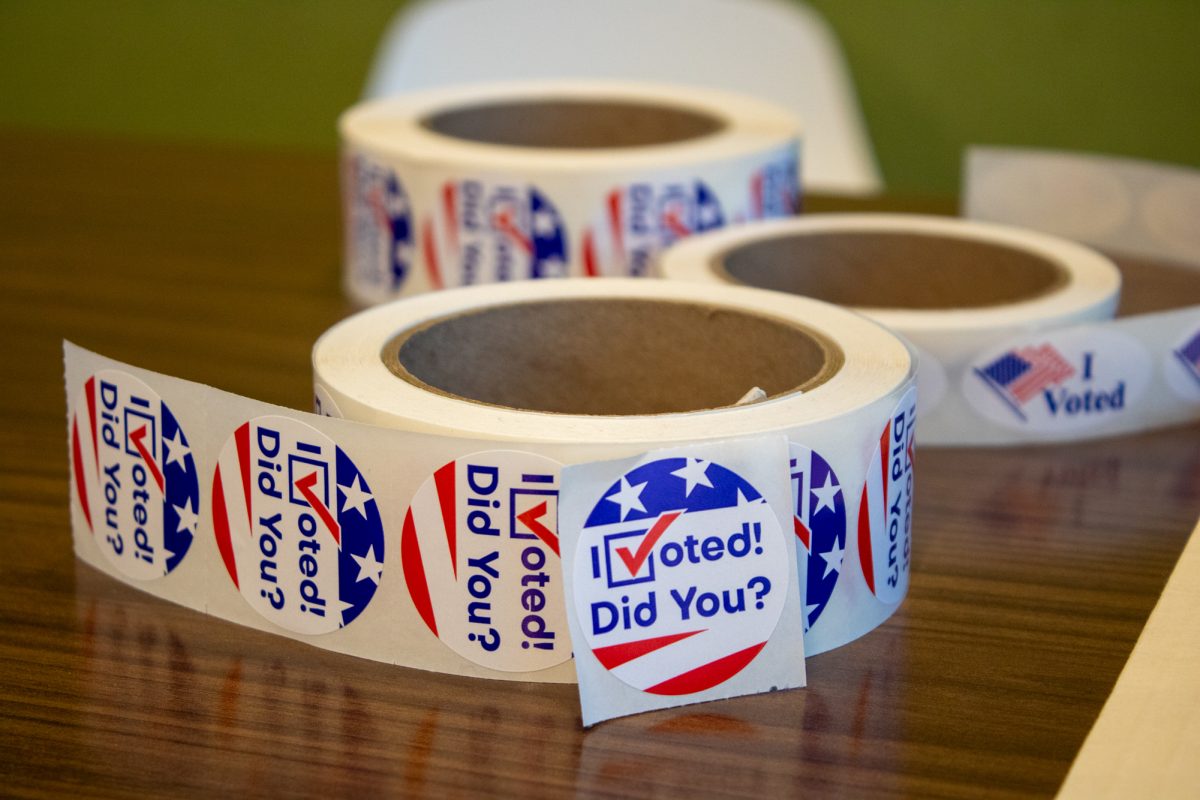Research on display

Photo: Rebekka Brown/Iowa State Daily
Pearl Sawhney, a sophomore at Maharishi School in Fairfield, talks about how different types of animal feed affect the environment. The Iowa High School Science Fair took place Friday and Saturday for Iowa high school students to show the different experiments they’ve done in various science categories.
March 28, 2010
Scientific research exploring improved ways to generate electricity, maintain the environment and produce money-saving fuel were showcased Friday and Saturday at the State Science and Technology Fair of Iowa.
The research, done by sixth through 12th graders from across Iowa, was displayed in the Iowa State Center’s Scheman Building.
More than 550 student scientists set up poster boards, laptops and research binders in one large room to be critiqued by volunteer judges.
“It’s a way for students to be able to showcase their work and talk to professionals in their fields,” said Travis Frey, senior high judging committee chair.
One goal of the fair is to get students to start communicating science to others. The fair was broken into different categories, like animal science, environment, health and medicine. The judges, from ISU Ames Laboratory and other universities across the state, were also broken into categories based on their experience and expertise. To encourage clear and efficient communication, the students were judged by at least one expert from another field.
Shawna Sieren, a sophomore from Keota High School, said she didn’t know what category each of her judges were from, but the goal of her project is familiar to everyone: to save money.
Her project — Using Food for Fuel and Financial Savings — found that food can be broken down to produce methane gas that can run electrical items, specifically kitchen appliances. Sieren got interested in this kind of research because her school, like many others, is losing money.
“They can save money by doing this and cut down on electricity, and maybe they don’t have to cut teachers or cut down in other places,” Sieren said.
Sieren used an anaerobic digester — an oxygen-free tank — to heat water and different foods, including bread, oranges, lasagna and French toast sticks. She then measured the gas produced, which came out through a hose into a water jug by the amount of water displacement.
The financial savings she calculated for her 120-person high school came out to be approximately $450 a year.
Her school would save the money they spend to haul away the average 33 pounds of food that is wasted every day if they used the garbage to produce methane.
Just a few poster boards down from Sieren, a different project focused on another popular issue, environmental damage.
Pearl Sawhney and Minna Mohammadi, sophomores from Maharishi High School in Fairfield, found that the food given to cattle in concentrated animal feeding operations produces the most negative impact on the water quality of nearby lakes, streams and rivers than organic food would.
“We wanted to find a local solution to a global problem,” Sawhney said.
The pair intends to continue their research and explore these feeding effects in different states and during different seasons.
Other projects at the fair explored a variety of different research, including psychology, health and engineering.
The 53rd State Science and Technology Fair of Iowa was open to any student in the state and did not require them to advance from another fair. More than $70,000 in prizes and scholarships were awarded to the student scientists.






